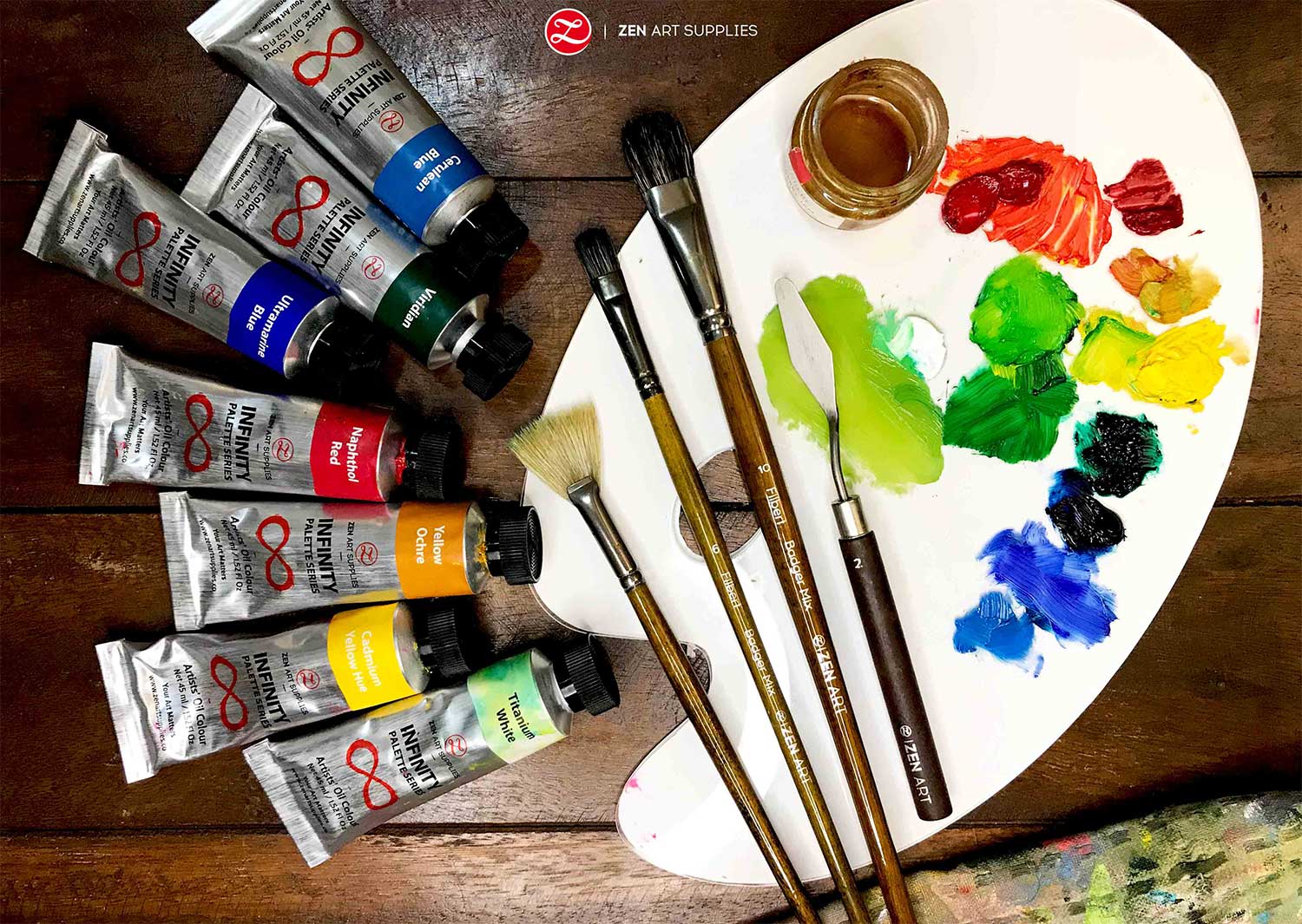The Timeless Appeal of Oil Paints:
Oil paints have long held a special place in the world of art. They are known for their rich textures, vibrant colors, and versatility, these paints have been used by some of the greatest artists in history, including Leonardo da Vinci, Rembrandt, and Van Gogh. In this blog, we’ll explore what makes oil paints unique, how they’re used, and why they continue to be a favorite medium for artists today.
What Makes Oil Paints Unique?
Made by suspending pigments in a binder of drying oils, usually linseed oil. This slow-drying characteristic is one of the key features that make oil paints stand out from other types of paint, such as acrylics or watercolors. The extended drying time allows artists to work at their own pace, blending colors and making adjustments over several days or even weeks.

The Richness of Color
One of the primary reasons artists favor oil paints is their unparalleled color richness. The oil medium enhances the depth and vibrancy of pigments, allowing for a luminous finish. Colors remain true and don’t fade easily over time, making oil paintings exceptionally long-lasting. This durability makes them ideal for artists who want their works to stand the test of time.
Flexibility in Technique
Oil paints offer incredible flexibility in terms of technique. Artists can apply thick, textured layers with a palette knife or create smooth, delicate transitions with brushes. Because of their slow drying time, ideal for blending, glazing, and building up layers, giving the artwork a deep, dimensional quality. This versatility allows artists to experiment with various styles, from photorealistic detail to bold, abstract compositions.
The Process of Using Oil Paints
Working with oil paints is different from other mediums because of their unique drying time and texture. Artists often start with thin layers of paint, known as “underpainting,” and gradually build up to thicker, more detailed layers. This method, called “fat over lean,” ensures that the paint layers dry evenly and prevents cracking over time.

Blending and Layering
One of the biggest advantages of oil paints is the ability to blend colors seamlessly. Artists can create soft gradients and transitions between hues, giving the artwork a smooth and polished appearance. Additionally, they are perfect for layering. By applying thin, transparent layers of paint on top of one another, known as glazing, artists can achieve a glowing, multi-dimensional effect that brings depth to their work.
Texture and Impasto
For artists who love to add texture to their paintings, offer the perfect medium. Through a technique known as impasto, thick layers of oil paint can be applied to the canvas using a brush or palette knife, creating raised areas that catch the light and add a dynamic, tactile quality to the piece. This technique is often used in abstract art, where texture becomes a central element of the composition.
The Drawbacks and Challenges of Oil Paints
The slow drying time, while advantageous for blending and layering, can also be a disadvantage for artists who prefer quick results. Additionally, the use of solvents such as turpentine to thin the paint and clean brushes can create strong fumes, requiring proper ventilation.
Cleaning and Storage
Another challenge is the cleanup process. It requires solvents for cleaning brushes, unlike water-based paints that can be rinsed with water. Artists need to take extra care to store oil paintings properly during the long drying period, ensuring dust and debris don’t stick to the surface.
Why Oil Paints Remain Popular Today
Despite these challenges, they continue to be a popular choice for artists due to their unique properties. Their versatility, color vibrancy, and ability to create texture make them an indispensable tool in the art world. Modern advancements, such as the development of odorless solvents and faster-drying mediums, have also made oil paints more accessible and easier to use for artists of all skill levels.

